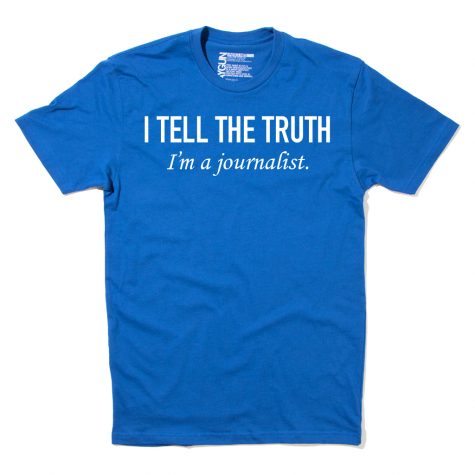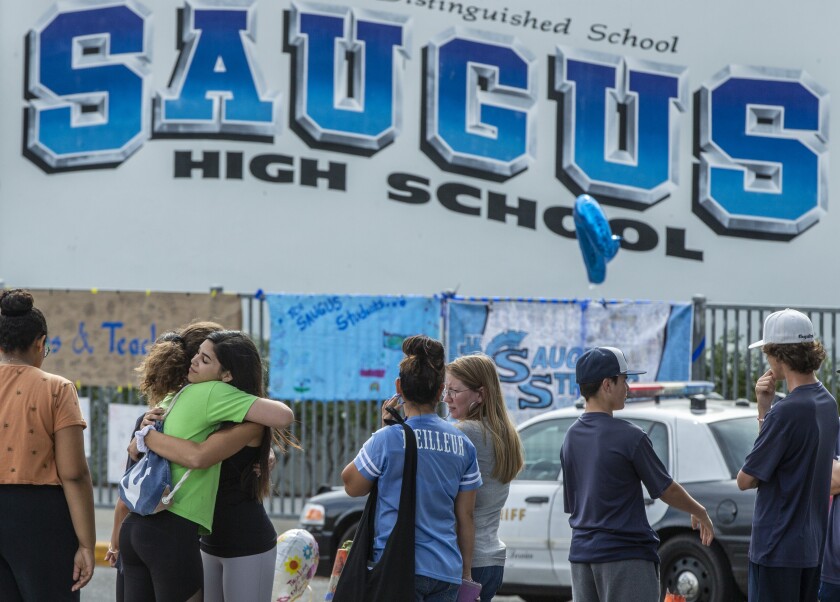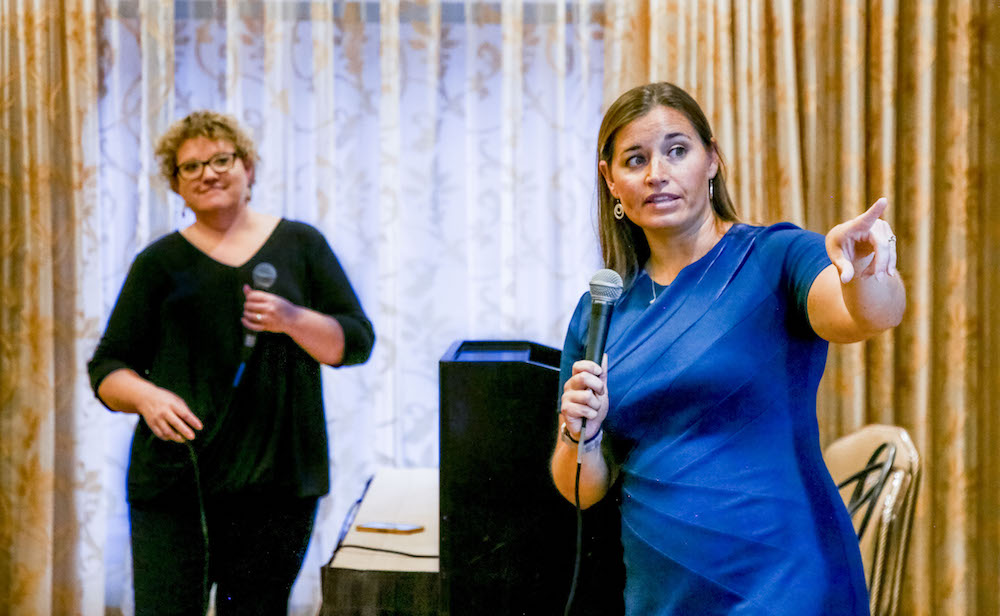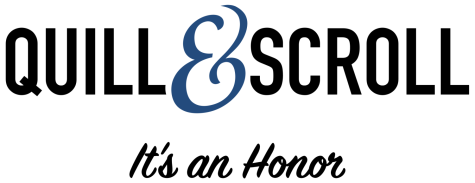THE WEEKLY SCROLL
November 22, 2019
News, tips and advice from Quill and Scroll
The Lede
Wednesday’s presidential debate and a good ol’ coffee chug

Photo by Unsplash
On Wednesday night, Democratic presidential hopefuls took to the stage for a mid-November debate. They covered a myriad of topics, ranging from child care, health care and abortion to farming, climate change, war and race.
In a surprising turn of events, gun control and immigration were not big talking points, as they have been in previous debates and the news. In stark contrast to that, Donald Trump and the impeachment hearings were topics the candidates did discuss, agreeing on the sentiment that President Trump has committed wrongdoing in the allegations of his misconduct in office and manipulation of foreign parties for his own political gain.
This debate came after 12 or so hours of riveting impeachment testimonies and analysis by the journalists on the ground in D.C. So, after a long day trying to stay caught up with the news, it was respectable that the debate moderators could keep this event interesting and engaging, with the candidates taking on a more level-headed approach, rather than a political brawl.
The struggle to stay caught up was felt with this viral clip of a reporter chugging coffee during the debate while Democrats were at it on stage.
“Because of the questions — and the way they were posed — the debate was void of the constant interruptions and chaos that often wrecks a debate,” said Tom Jones, author at Poynter Institute. “The moderators showed superb judgment and prudence when letting candidates make their full points without allowing them to run amok. They challenged the candidates, but didn’t pit them against one another the way previous moderators have.”
The takeaways, according to The Washington Post:
- For much of the debate, the candidates shied from the biting exchanges and intraparty contrasts that marked the first four gatherings, opening new lines of conversation on issues as disparate as racial justice, marijuana policy and child care. But there were also pointed if brief disputes as the night wore on, some of them focused on black voters, a key Democratic constituency…Mayor Pete Buttigieg showed signs of surging in several polls, and Sen. Kamala D. Harris (Calif.) obliquely criticized him for his lack of support among black voters.
- “We have a criminal living in the White House,” Harris said…While impeachment is a unifying topic for Democrats, the presidential race has showcased the party’s internal struggle over how much of the campaign should revolve around Trump’s fate, versus maintaining the issue-heavy focus that led the party’s 2018 House candidates to a majority. Within the policy field is a separate Democratic fight, over whether to pursue the sweeping policy changes backed by its liberal wing or embrace a more-moderate vision for bringing the country together after Trump.
- For the fifth debate in a row health care was a prominent topic, with the party still grappling over whether it should continue to defend the Affordable Care Act passed under President Barack Obama or aim for a more far-reaching program that would again upend the health-care system. It has become one of the most vigorously fought topics, with Warren and Sanders proposing a Medicare-for-all plan that would abolish private insurance and place all Americans under a government-run system…But the more-moderate candidates onstage also defended their approaches.
- Buttigieg has emerged as a clear primary front-runner in some states, with a recent poll putting him ahead of the pack in first-to-vote Iowa. His opponents began sharpening their attacks on him before the debate even started, with some questioning his experience as a small-town mayor and others challenging him directly over his handling of racial issues.
- Biden, when asked about being more sensitive to the cultural reckoning with sexual harassment and violence toward women, spoke of how he took advice from college students to “get men involved, engage the rest of the community.”
Read more about the debate and takeaways from it here.
Investigation finds former Fox News Exec pushing division among Americans

Photo by Unsplash
Ken LaCorte, a former Fox News executive, ran and continues to run two sites that push America’s culture wars today. The sites? Conservative Edition News and Liberal Edition News.
The websites are both managed by LaCorte, who was accused of killing the story about President Trump’s affair with pornography actress Stormy Daniels preceding the 2016 presidential election.
“Until now, it was unclear who was behind the sites,” The New York Times states. “But an investigation by The New York Times and researchers at Nisos, a security firm in Virginia, found that they are among several sites owned by Mr. LaCorte that push inflammatory items — stories, petitions and the occasional conspiracy theory — to the American public.”
Interesting enough, the sites mimic Russian tactics that the Kremlin used to interfere in with American politics in 2016, concerning topics like Benghazi, border security, gun control and Black Lives Matter, according to the Times.
“I wanted to try to find middle ground,” Mr. LaCorte said. “Unfortunately, the things that work best right now are hyperactive politics. On one hand, that’s at odds with what I want to do. But you can be more successful by playing the edgy clickbait game.”
Despite the division and misinformation sites like these may spread, whittling away credibility in the media and bringing to light the issue of fake news, content like this is protected by the First Amendment of the United States under free speech. It begs to question, what Americans really care about? Finding topics to argue about and further divide oneself from others as a country or come together to find a common ground by discussing facts and valuable information and policies that affects citizens in the U.S.
Read more about The New York Times’s investigation into LaCorte and his sites here to learn more.
It’s An Honor
Hello from the #NHSJC
We’re at the National High School Journalism Conference! Stop by the table in the exhibit area to pick up some Q&S schwag, get a look at our t-shirt and talk to Executive Director Jeff Browne about Quill and Scroll contests, scholarships and everything else. Have a great conference!
Q&S podcast interviews international journalist Susanne Fowler
Listen to THE SOURCE, Quill and Scroll’s podcast. Q&S staffer Sylvia Clubb hosts this episode with special guest Susanne Fowler, a reporter and editor who has worked for several news outlets internationally, including the New York Times. Susanne is also a member of Quill and Scroll, having been inducted in the 1970s at Cedar Rapids Kennedy High School in Cedar Rapids, Iowa.
Contest updates
We will announce all winners in the 2019 Yearbook Excellence Contest in early December 2019.
Quill and Scroll has updated the the 2020 Writing, Photo and Multimedia Contest so that it rewards students with the work they regularly produce in their newsrooms.
New contest categories include:
- Portrait Profile Photo — This is likely to be an environmental portrait of a person or a group of people. These sorts of photos usually accompany a profile story.
- Documentary Video — This is not a news video, but a non-fiction project that your students may have completed that feels more like a film. It can be any length longer than five minutes. Traditional news packages should be entered in the Video Package categories: news, sports and features.
- News Show for Web or TV: Single Episode — Submit a single show of between five and 30 minutes, produced either for cable and/or web.
Quill and Scroll will also award Blue and Gold Awards in three areas this year:
- Comprehensive Writing (Categories 1-11 below)
- Comprehensive Visuals (Categories 12-24)
- Comprehensive Multimedia (Categories 25-30)
Here are the 2020 contest categories:
- Editorial Writing
- News Writing
- Feature Writing
- Opinion Writing
- Review Writing
- In-Depth Reporting: Individual
- In-Depth Reporting: Team
- Sports Writing
- Profile Writing
- Political Writing
- Health, Science and Agriculture Writing
- News Feature Photo
- Sports Action Photo
- Sports Reaction Photo
- Photo Illustration
- Photo Slideshow
- Profile Portrait
- Cartoon
- Informational Graphic
- News Mag Cover Design
- News Front Page Design
- Feature Page Design
- Sports Page Design
- Editorial Page Design
- Video News Package (up to five minutes)
- Video Sports Package (up to five minutes)
- Video Feature Package (up to five minutes)
- Documentary Video (Single subject, five minutes or longer)
- Audio Podcast Single Episode (any length)
- News Show for Web or TV, Single Episode — 5:00 to 30:00
In addition, Blue and Gold Awards will be given for overall excellence. McCallum High School in Austin, Texas, has earned that title crown for the past two years.
Entry forms will be available Dec. 3, 2019. The contest deadline remains Feb. 5, 2020. As always, the top 10 percent of all entries in every category qualify the student who produced it for the Quill and Scroll scholarships in their senior year.
Official Quill and Scroll video!
Discover the rich history behind Quill and Scroll’s founding principles and organizational practices. Click that play button below to join our journey, understanding how we developed and progressed over the years. From 1926 to today, we are an organization dedicated to honoring quality student journalism, providing students and their advisers with resources to do that great work and have it recognized.
Video accredited to Roman Slabach from The Daily Iowan.

“I TELL THE TRUTH” t-shirts available for your staff
Now is the time to order your Quill and Scroll “I TELL THE TRUTH — I’m a journalist” t-shirts. As you know, “Truth” is the first pillar upon which Quill and Scroll was founded in 1926.
Every time we get to 100 t-shirts ordered, we’ll print up a new batch and ship them to you. All profits will go to the Quill and Scroll Scholarship Fund, which benefits Quill and Scroll members who plan to study journalism in college.
Just fill out the form at this link to tell us how many you want in each size. We’re offering a unisex style and a female-fit style. RAYGUN is printing the shirts for us, and you can read about their “USA-made” t-shirts here.
Of course, we’d like every Quill and Scroll member to wear one, but these shirts are good for any journalist.
We will accept only credit card payments, and there’s a per-order charge for that. So order all your t-shirts at one time and save!
What’s Viral?
Incorporating artificial intelligence to advance newsrooms
In a report by Polis, the media think-tank at the London School of Economics and Political Science, the faster news rooms adopt artificial intelligence (AI) into their daily tasks, the more up-to-date and relevant journalists will be. As technology advancements are made, the struggle to stay on top of the news and updates with the changing political and technological climate is ongoing. By adopting artificial intelligence, newsrooms are able to sift through the overwhelming amount of news and misinformation that is available on the internet.
“AI could also transform newsrooms from linear production lines into networked information and engagement hubs that give journalists the structures to take the news industry forward into the data-driven age,” Charlie Beckett, director of Polis, said in the preface.

Graph from Polis report and the results of the polled question, “Why Newsrooms Use AI”
Journalists expressed concern regarding pay cuts and task realignment because of AI introduction into their newsrooms.
“AI technologies will not save journalism or kill it off,” Beckett responded to these concerns. “Journalism faces a host of other challenges such as public apathy and antipathy, competition for attention, and political persecution…Perhaps the biggest message we should take from this report is that we are at another critical historical moment. If we value journalism as a social good, provided by humans for humans, then we have a window of perhaps 2-5 years, when news organizations must get across this technology.”
Journalisms ever-changing job responsibilities and innovations have come to another point of contention: the incorporation and balance of technology in conjunction with human abilities.
Watch the video below for a summary of the report:
Fighting the “OK Boomer” age gap
High school students in Collier County, Florida, work to bridge the age gap between “Generation Z” and the “Baby Boomer” generation by participating in a program that visits local senior centers. The Visiting Teens club, started by Olivia Cederquist of Barron Collier High School in Naples, Florida, visits with a local senior center once a month to spend time with residents: playing games, reading, or simply conversing with the residents who wish to participate. The students get to know the participating seniors, as well as understand things about the Boomer generation that seems so removed from Gen Z.
According to an article by Katelyn Newman, “More than a third of U.S. adults over 45 – nearly 48 million – are lonely, according to a 2018 report from the AARP Foundation. Social isolation and loneliness have been linked to a higher risk of developing a variety of mental and physical health issues, including heart disease, obesity, a weakened immune system, depression, cognitive decline, Alzheimer’s disease and death, according to the National Institute on Aging.”
Both students, advisors and directors a part of Visiting Teens have expressed that the program is beneficial to both the high school students and the seniors.
Cederquist hopes the program can eventually be integrated into schools across America.
High school students use TikTok to address school shootings
After a school shooting at Saugus High School in Santa Clarita, California, on Nov. 14, students at Saugus are taking to TikTok to express their feelings regarding the event and what happens next.

Photo by: Brian Van der Brug for the Los Angeles Times
Lauren Olmeda, a senior at Saugus, stayed home from school after her mother heard reports of open fire at the high school. In order to cope with what was going on and watching what was happening at her high school as an outsider, Olmeda made a TikTok compiling images from news reports the morning and afternoon of the shooting. There, she expressed her fears of what was happening. After her post(s), other students also made TikToks to express what they were feeling regarding the shooting.
TikTok allows users to post captions along with their TikToks, using hashtags in order for their videos to be discoverable in discussion of similar topics. The hashtags “SaugusStrong,” “SaugusHighSchool” and “Saugus” have combined viewings of over four-hundred and thirty thousand.
While the app is best known for its lighthearted videos, dozens of students from Saugus and other schools expressed their accounts, grief, anxieties, and fears through the app’s maximum of sixty second video clips. The use of the app in this way shows a shift in how students are coping with negative emotions and experiences — such as school shootings — and how popular technology is a safe haven for them.
Read more from students about their use of the app and the Saugus school shooting here.
Free Spirit Journalism Conference sets 2020 dates
The Al Neuharth Free Spirit and Journalism Conference for high school students is set for June 19-24 in Washington, D.C. The conference is for high school journalists in the class of 2021 (rising seniors) who want to be professional journalists and who demonstrate, through their application, that they embrace the “free spirit” embodied by Mr. Neuharth.
The application process is open, and the deadline for applications is Feb. 1, 2020. One student from all 50 states and the District of Columbia will be selected for the conference.
Learn more about how to apply here.
Just a Thought

Joy Mayer and Lynn Walsh, contributors to the Trusting News Project. Photo by Leslie Gamboni.
Learn to trust your journalistic skills — and teach others to do so, too
Joy Mayer, the Director for the Trusting News Project, shared five tips to feel empowered about being a journalist (and telling the truth, too). These tips are meant to be a guiding light at the end of a dark and hard to navigate tunnel. Continuing to learn about journalism only helps that journalist grow with the news, keeping truth at the center of it all. Here are her five tips for feeling empowered about truth in journalism:
- Answer questions about your coverage (even when they’re phrased as accusations or misassumptions). Find out what your community doesn’t understand about your work, and clear up their confusion. Jump into comments when possible (to moderate and participate), remembering that if you don’t correct the record when false statements are made about your work, you’re giving the last word to your detractors.
- Explain how you decide what stories to cover. In a typical day, your newsroom probably has several (or even dozens) of potential stories editors could assign, with far fewer reporters available. The process of selecting coverage is routine for most of us but completely mysterious to the public. What makes something newsworthy? How do our choices reflect what our organization thinks is important? Try putting a note at the top of a story, in a newsletter or in a social post explaining what made it worth covering. Add that information into comment threads. Host a Facebook Live conversation about how editors make those decisions.
- If you get something wrong, explain yourself. Too many people do not think journalists care about accuracy, and they sure don’t understand that credible journalists acknowledge and correct errors publicly. If you need to publish a correction, make the most of it by helping people understand that your willingness to draw attention to the error is a sign of your credibility. We want the public to trust news organizations that are willing to do it (which not all are). Help educate them about that. (And if you get something right and other news outlets are wrong, explain that too.)
- Keep opinion journalism and news separated and properly labeled. News consumers are frustrated by blurred lines, and by news that feels like it includes journalists’ opinions. Help solve that problem with clear distinctions and labeling, and by explaining who is writing your opinion content. (Here’s how one of our newsroom partners explained their efforts recently.) And while you’re at it, tell your community how you work to be fair in your news coverage. Don’t assume they know.
- Make the most of face-to-face interactions. We know from a recent Pew study that only 21% of Americans have ever spoken with a journalist. (And those interactions are less likely to have happened with younger, less affluent, less educated, non-white people.) That means each time we interact with someone in the community, it could be that person’s very first time talking to a journalist. Go in prepared, with talking points for anticipated criticism. Create a handout about your newsroom, and point to your ethics policy and contact information.
Read the rest of the article here.
To learn more about the Trusting News Project, visit trustingnews.org.


